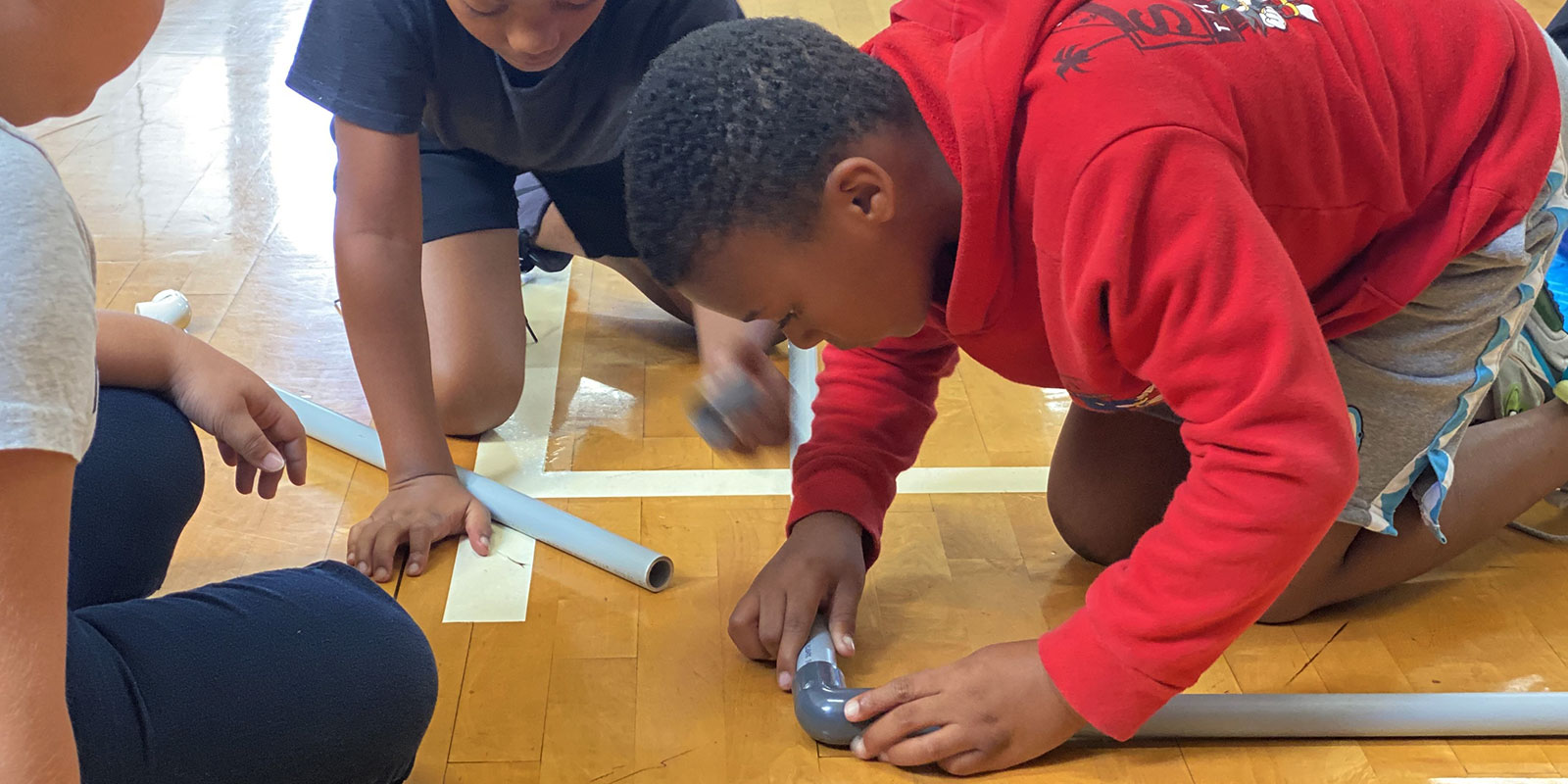
Water Explorers
Our unique Pre-K-5th grade lessons are:
High Quality & Engaging
Taught by Skilled Educators
Free of Charge
Our inquiry-based and multi-sensory activities strengthen students' minds and bodies by…
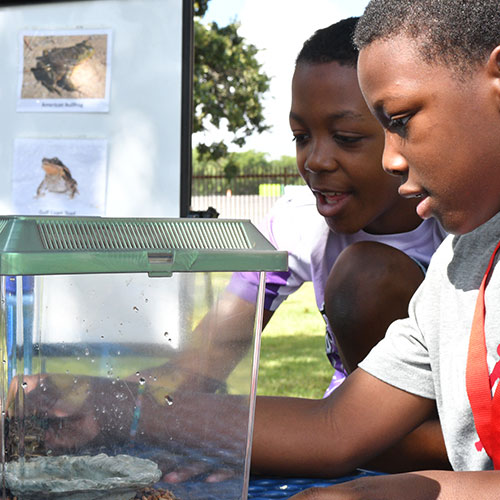
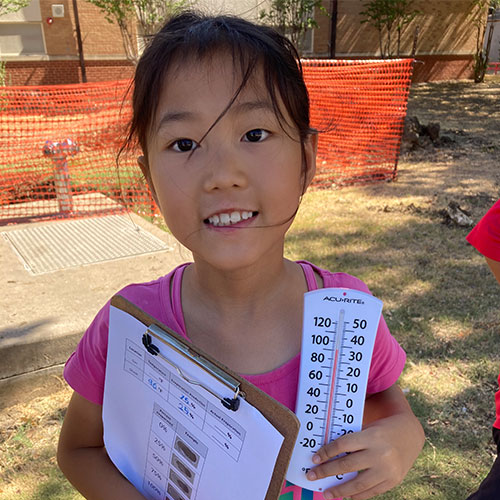
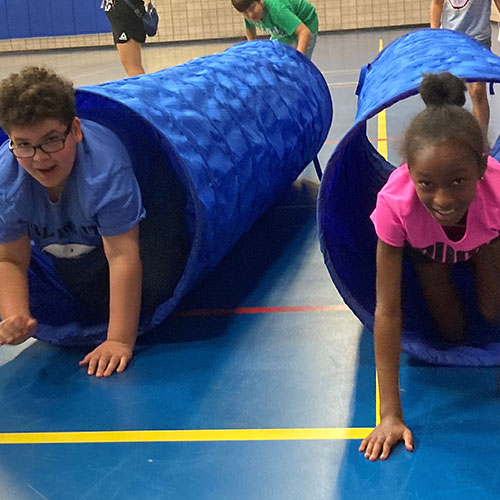
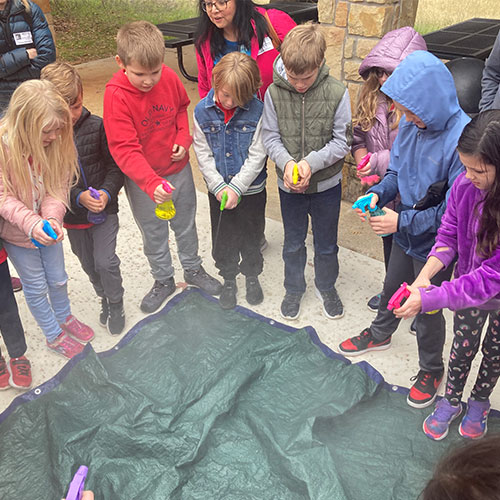
Click to View Our Program Offerings by Grade Level
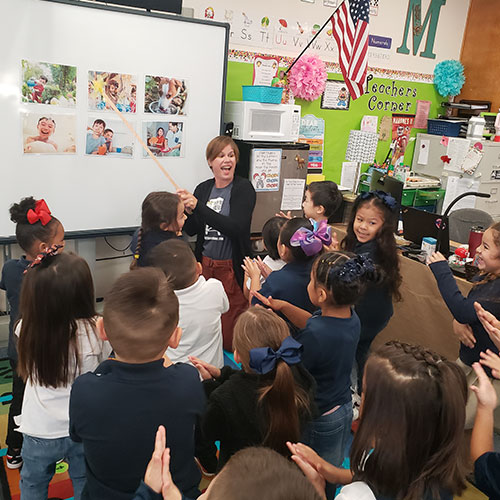
Water Wiggles
Get ready to wiggle and giggle as we turn on the music and act out ways we use clean water every day! Quacky the Duck will come along for the fun and help us recognize how to care for and save water every day. (Indoors)
Key Concepts
- Using water wisely is important and helps us care for our community and the environment. (PK4.VI.C.4)
- We all use water in many ways every day. (PK4.VII.A.3)
Key Skills and Activities
- Suggest movements to tell the story of how we use water. (PK4.VIII.C.1)
- Pantomime ways we use water in time with the rhythm of music. (PK4.VIII.B.1)
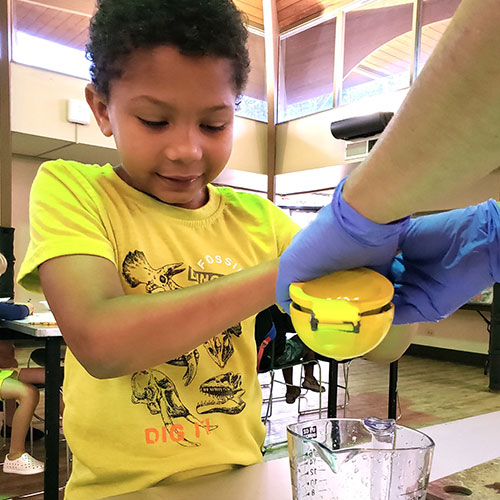
It’s a Waterful World
Why do our bodies need water to be healthy? Do plants and animals need water too? Play a sensory-based guessing game to identify ways our bodies use water, see and touch the water in plants, and learn how we can all care for the precious water we need to live. (Indoors or Outdoors)
Key Concepts
- All living creatures need water to live, just like food and shelter. (PK4.VII.B.1)
- Using water wisely is important and helps us care for our community and the environment. (PK4.VI.C.4)
Key Skills and Activities
- Observe, describe, and discuss the characteristics of humans, plants, and animals. (PK4.VI.B.1)
- Observe, describe, and discuss the relationships of humans, plants, and animals to their environment. (PK4.VI.B.3)

Where’s That Water?
Listen closely to water as it bubbles, swishes, and flows. Can you guess where water is being used in a home? Learn where this precious water comes from, create a display of home water uses, and model ways to use water wisely. (Indoors)
Key Concepts
- We all use water every day in many different ways. (S.K.12.B)
- The water we need to live comes from rain and is stored in lakes. (S.K.12.B, SS.K.4.A)
- We need to conserve water because sometimes it doesn’t rain enough to keep our lakes full. (S.K.10.B, S.K.5.G)
Key Skills and Activities
- Use a water supply model to demonstrate how water is supplied to our homes. (S.K.5.D)
- Describe how the amount of water in lakes changes when it rains and when we take water out to meet our needs. (S.K.5.G)
- Develop, communicate, and listen to solutions for conserving water. (S.K.3.A, S.K.3.B, S.K.3.C)
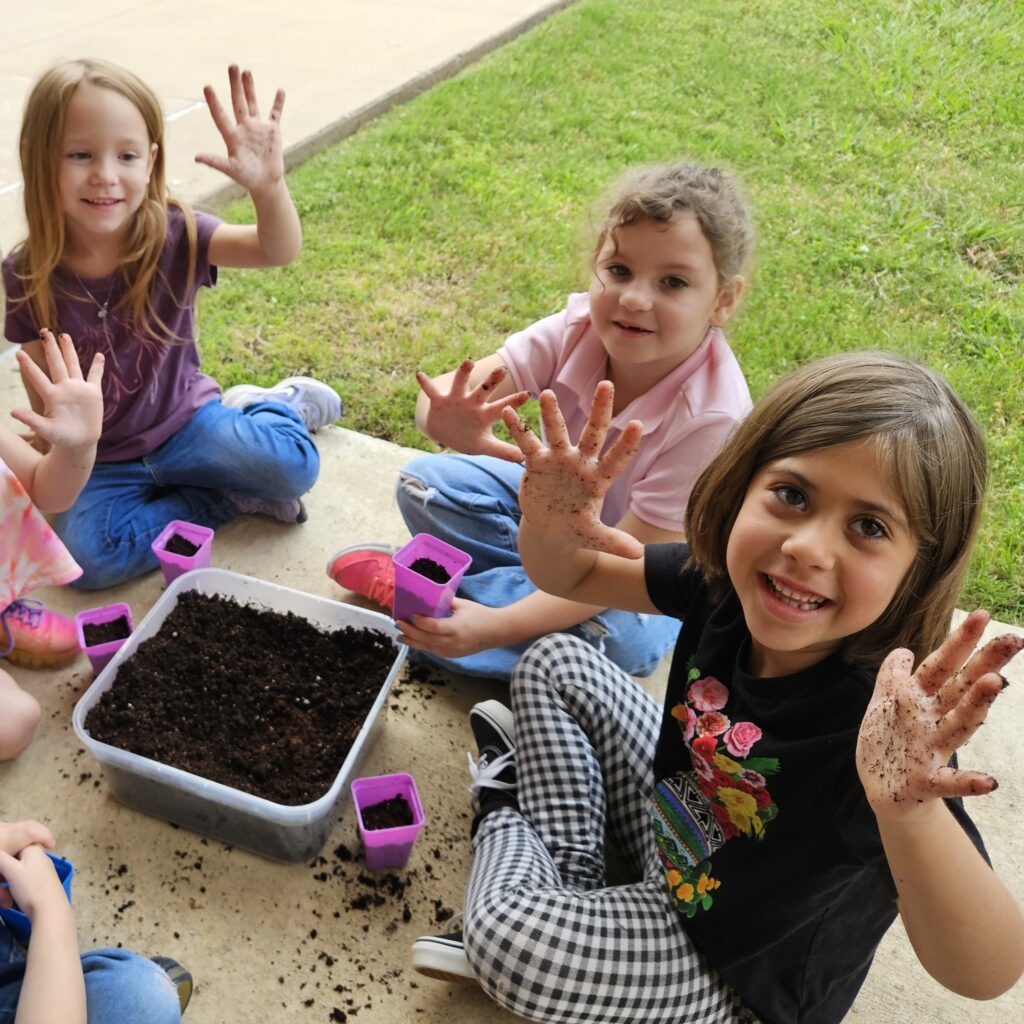
Growing Time
Why do we need water to grow? Examine evidence that people and plants are made of water, act out the life of a Texas wildflower, illustrate each step of the flower’s life, and plant wildflower seeds to beautify your home or school. (Indoors or Outdoors)
Key Concepts
- People and plants depend on water, air, nutrients, and space to grow. (S.K.12.A, S.K.12.B)
- We use water in many ways which makes it valuable. (S.K.11)
- We can make sure people have enough water for their needs by using water wisely. (SS.K.5.C)
- Plants have different structures that help them survive. (S.K.13.A)
Key Skills and Activities
- Observe and identify how people and plants depend on water. (S.K.12.A, S.K.12.B)
- Act out the life cycle of a plant from seed to seed. (S.K.13.C)
- Identify the structures of plants, including roots, stems, leaves, flowers, and seeds. (S. K.13.A)
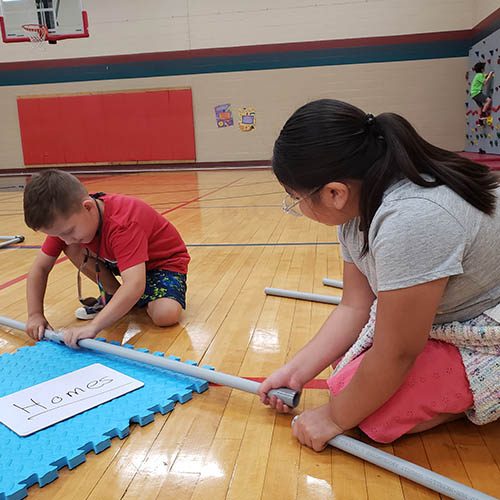
Water Works
When we turn on our faucets, clean water appears almost magically. Where does it come from? Become a water engineer and build a large model of our water supply system to provide the clean water our community needs! (Indoors – Gym or Large Room)
Key Concepts:
- We all need water to live, and we use it in many ways. (S.1.11.A)
- Water is valuable and we need to conserve and protect it. (S.1.11.B, S.1.11.C)
- People build lakes to collect rainwater and systems of pipes to move water where we need it. (S.1.4.A, S.1.11A, SS.1.5.A)
- Many people such as scientists and engineers work together to bring us clean water every day. (S.1.4.B)
Key Skills and Activities
- Work in teams to construct a model of our water supply system. (S.1.1.G, SS.1.12.A)
- Assess the water supply model and make repairs, just like workers in real life. (S.1.2.D)
- Identify and discuss ways to conserve water. (S.1.11.B, SS.1.5.A)
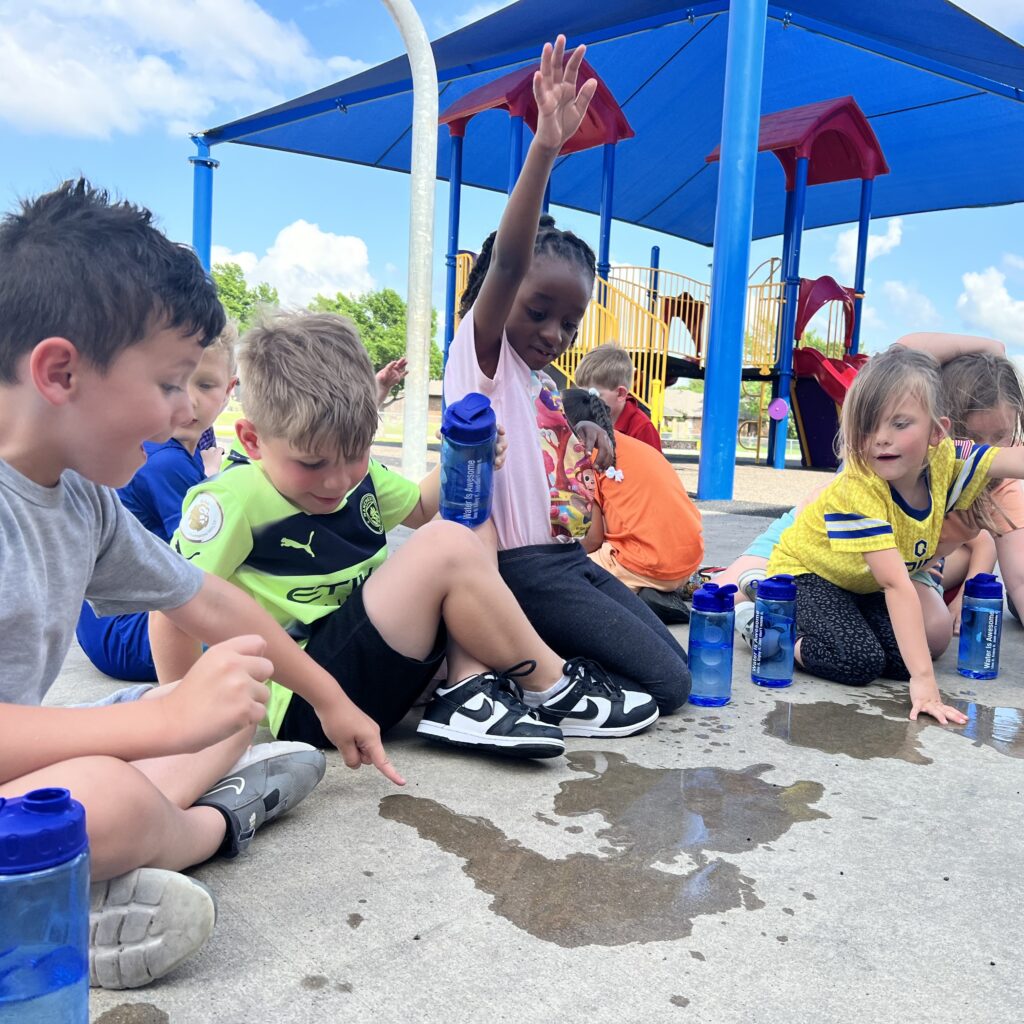
Ride a Raindrop
What happens to rain after it falls on the ground? Become a raindrop to learn about their journey, conduct experiments to explore how water moves on the earth, and play a clean-up game to practice keeping our waterways litter-free. (Outdoors)
Key Concepts
- Water is valuable and we need to conserve and protect it. (S.1.11.B, S.1.11.C)
- Rain soaks into the soil, helping plants to grow. (S.1.11.A)
- Rainwater moves over the surface of the earth and collects in natural water bodies. (S.1.10.C, SS.1.5.A)
- When rain runs off paved areas, it can carry trash into water bodies. (S.1.11.C)
- We can protect natural sources of water by picking up litter. (S.1.11.C)
Key Skills and Activities:
- Investigate how water moves when it falls on the ground and paved areas. (S.1.1.A, S.1.1.B)
- Communicate observations about how water moves on different surfaces. (S.1.3.B)
- Identify and explain how litter pollutes water and propose a solution. (S.1.3.A, S.1.11.C)
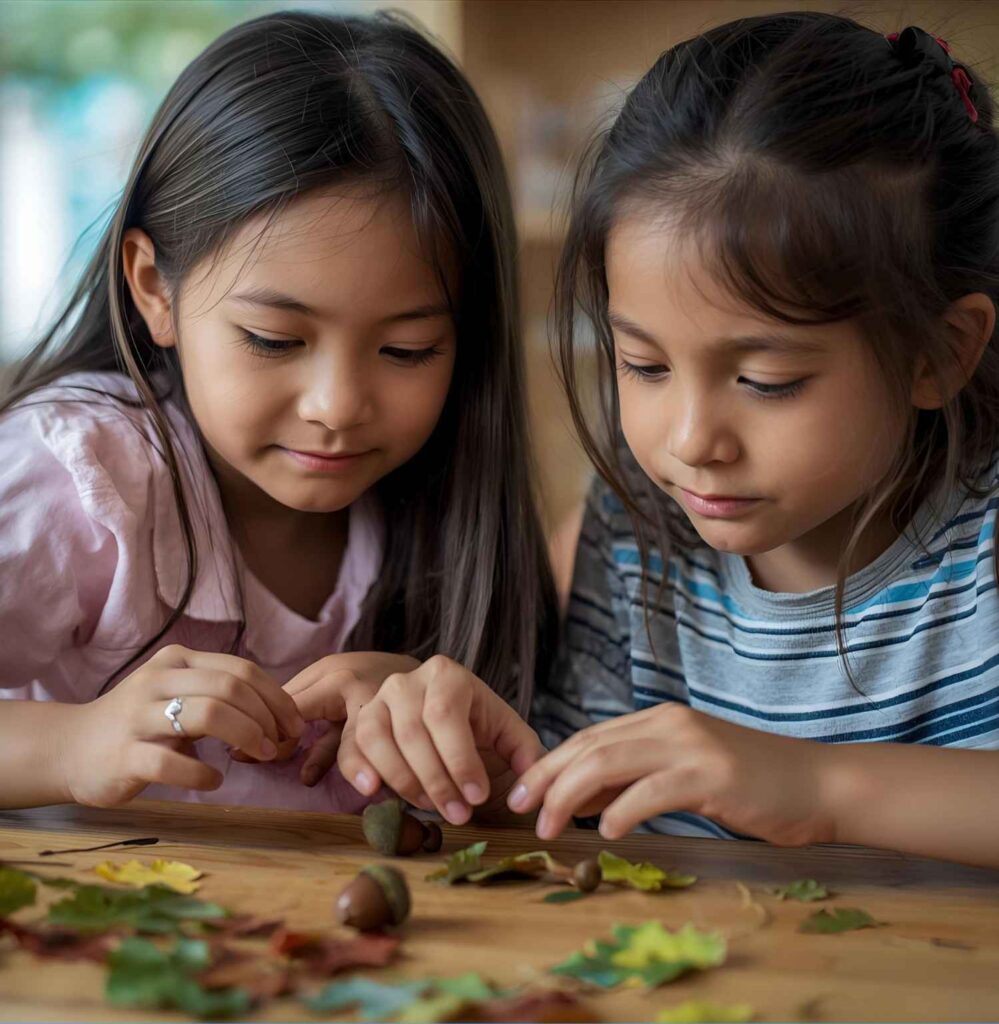
Staying Alive
NEW THIS SPRING!
Discover first-hand why Texas plants have what it takes to survive and thrive in our challenging climate! Assemble a puzzle of plant parts to identify your plant celebrity, conduct experiments with real seeds to observe how your plant disperses in nature, and identify your plant’s water-saving superpower. (Indoors)
Key Concepts
- Plants have unique structures that help them survive. (S.2.5.F, S.2.13.A)
- Plants depend on water, wind, and animals for pollination and seed dispersal. (S.2.12.C)
- Characteristics of ecosystems such as rainfall help plants and animals survive. (S.2.12.A)
- People can plant native plants to conserve water so that we have enough water to meet our needs. (S.2.11.B)
Key Skills and Activities:
- Investigate how seeds are part of plant systems and help these organisms survive. (S.2.5.D)
- Conduct experiments to observe how seeds are dispersed by wind, water, and animals. (S.2.12.C)
- Analyze graphs to identify patterns in local rainfall data and draw conclusions about plant needs. (S.2.12.A)
- Describe how human impact can be limited by making choices to conserve water. (S.2.11.B)
NOTE: This lesson will be available in February 2026.
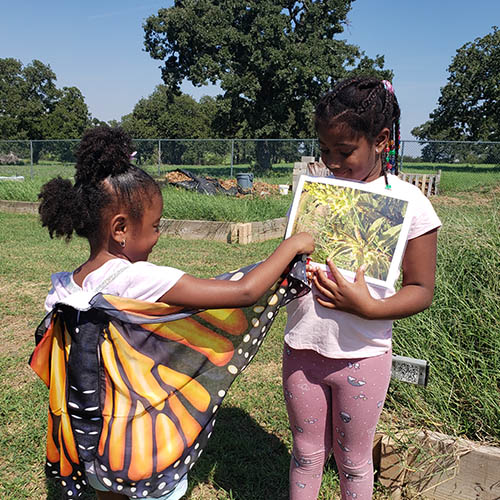
Monarch Buddies
Do you know the special way we can help Monarch butterflies and conserve water at the same time? Join a theatrical tale about children planting a garden for Monarchs and then take flight to find native nectar and milkweed plants! (Outdoors)
Key Concepts:
- All people, plants, and animals need water to live. (S.2.12. A)
- Water is valuable and we need to conserve and protect it. (S.2.11.B, SS.2.5.C)
- Monarch butterflies have unique structures that help them survive. (S.2.13.B)
- Monarchs depend on milkweed plants to raise their young. (S.2.12.B, S.2.13.D)
- Native Texas plants provide food for Monarchs and can survive with little water. (S.2.12.A, S.2.12.C)
Key Skills and Activities
- As Monarch butterflies, search for nectar plants for food and milkweed plants to lay eggs. (S.2.12.B)
- Develop, communicate, and listen to explanations and solutions to help Monarchs and conserve water. (S.2.11.B, SS.2.5.C, S.2.3.A, S.2.3.B, S.2.3.C)
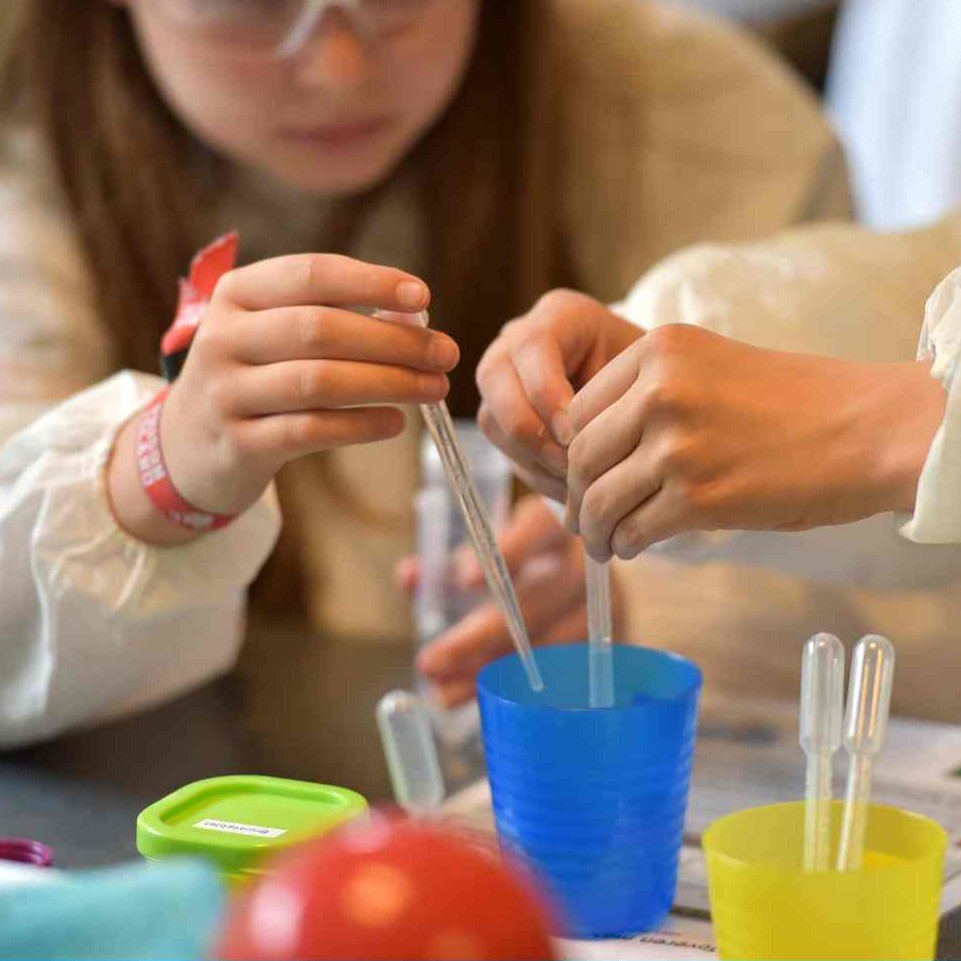
Under Pressure
NEW THIS SPRING!
Explore the forces that provide our communities with clean water! Design and test a water distribution model, observe how gravity and pressure play key roles in moving water, and judge the best ways to conserve water at home. (Indoors)
Key Concepts
- Water is valuable because we need it to survive and use it in many ways. (S.3.11.A)
- Scientific discoveries and solutions have helped societies move water where it is needed. (S.3.4.A)
- In North Texas, we build lakes to supply water, pumps and pipes to move water, and treatment plants to clean water. (S.3.11.A, SS.3.4.B)
- Conserving water makes our water supplies last longer and helps ensure we have enough water to meet our needs. (S.3.11.B)
Key Skills and Activities
- Design and test a water distribution model using syphons and pumps. (S.3.1.G, S.5.D)
- Explain how scientific discoveries and solutions for moving water have impacted society. (S.3.4.A)
- Compare the scale of different water distribution systems. (S.3.5.C)
- Assess the value of different conservation strategies. (S.3.11.C)
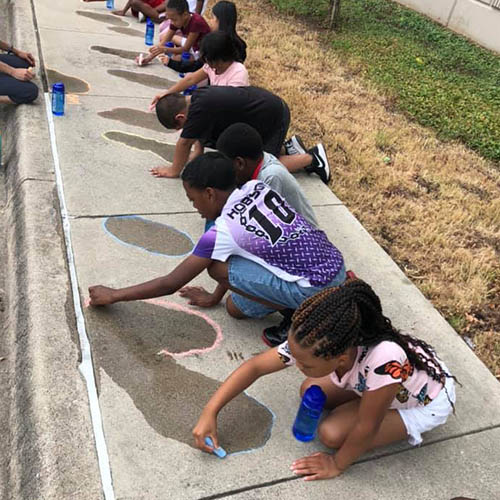
Keeping It Cool
How do people, plants, and animals stay cool when it’s hot? Get spritzed to feel water’s cooling power first-hand, conduct your own evaporation experiment, illustrate how weather affects our water supply, and ponder clues to reveal water-saving strategies. (Outdoors)
Key Concepts
- Energy from the sun heats liquid water and causes it to evaporate. (S.3.8.A, S.3.6.C)
- People, plants, and animals need more water when temperatures are high. (S.3.12.A)
- Lakes lose more water to evaporation when temperatures are high, impacting our water supply. (S.3.5.G)
- We need to conserve water because our supply is limited, and we need enough to meet our needs. (S.3.11.B, SS.3.3.B)
Key Skills and Activities
- Predict, observe, and record changes in water caused by heating. (S.3.6.C)
- Observe, record, and compare air temperature in different locations at the same time. (S.3.1.D, S.3.10.A)
- Collect and record observations and measurements from an evaporation experiment. (S.3.1.E)
- Analyze data and explain the results of the experiment. (S.3.2.B, S.3.3.B)
- Use clues to identify ways to conserve water at home. (S.3.11.C)
Note: This lesson is available from March through November.
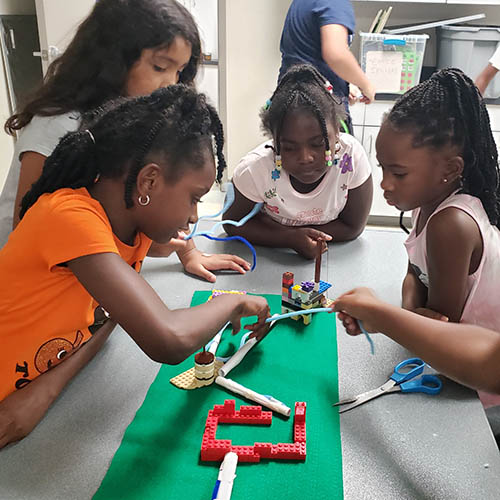
Engineering H2O
Supplying clean, reliable drinking water to our communities takes talent, technology, and teamwork. Work together to create models of our water supply system, predict and model changes from population growth and drought, and brainstorm strategies to provide enough water to meet our needs. (Indoors)
Key Concepts
- Clean, reliable sources of water are essential for our communities to grow. (S.4.11.A)
- People have modified the natural environment by building systems to collect, store, clean, and transport water to meet our needs. (SS.4.8.A, SS.4.8.B)
- Weather and climate affect our water supply. (S.4.10.C)
Key Skills and Activities
- Construct a model of our local water supply system (S.4.1.G, SS.4.8.A, SS.4.8.B)
- Identify and discuss strategies to meet local water demand. (S.4.11.B)
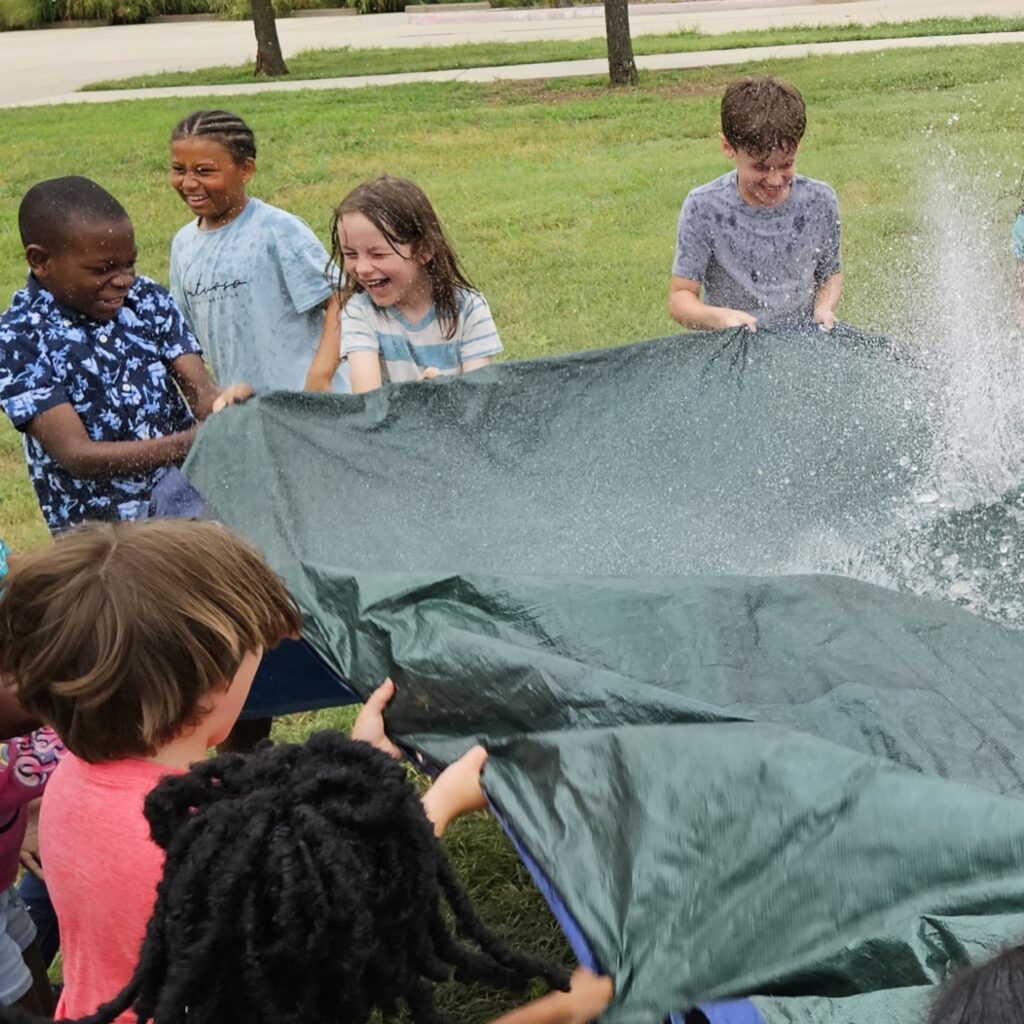
Water Rangers
Where does our drinking water come from? Do our everyday activities affect this water? Learn the answers by making it rain on a large model earth, exploring outside to discover how rainwater travels, modeling a rainstorm in a busy cityscape, and becoming Water Rangers who conserve and protect water. (Outdoors)
Key Concepts
- Water is valuable because we need it to survive and use it in many ways.
- Our drinking water comes from rain, travels along the surface of the earth in streams and rivers, and collects in lakes. (S.4.10.A)
- Human activities can pollute water as it travels along the surface of the earth. (SS.4.8.C)
- We can all help to conserve and protect water. (S.4.11.B)
Key Skills and Activities
- Investigate drainage patterns by looking for erosion and deposition clues and identifying slope. (S.4.1, S.4.10.B)
- Create two different watershed models to understand how water moves on the surface of the earth and can become polluted. (S.4.1.G)
- Identify and discuss ways to conserve and protect water. (S.4.11.B)
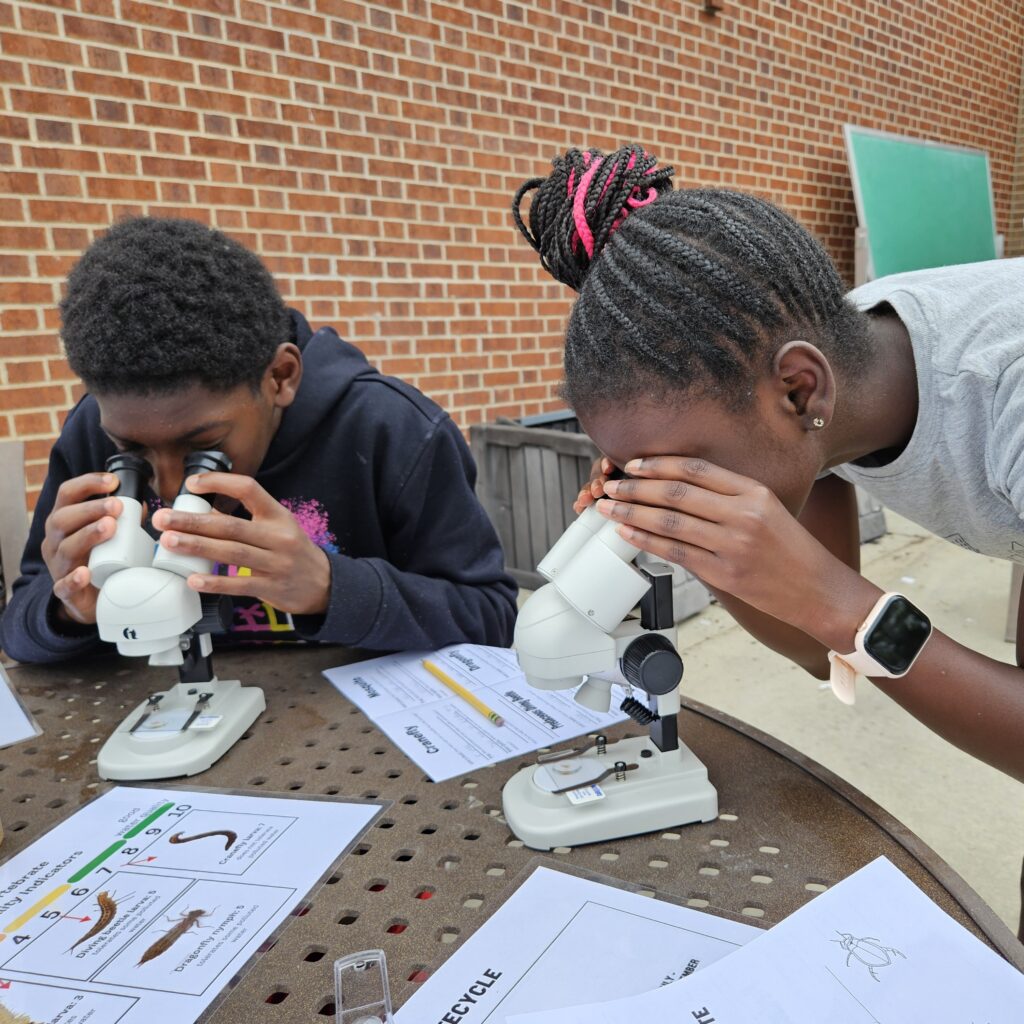
Little Critters, Big Impact
A wild world of aquatic insects can be found in our waterways! While small, these creatures are key to healthy aquatic habitats and reveal important clues about water quality. Take a close-up look at the unique structures of these macroinvertebrates, discover how human activities affect them, and identify ways we can protect and conserve water for people and wildlife. (Indoors)
Key Concepts
- Clean water is essential for all life and should be conserved and protected. (S.5.11)
- Creeks and streams flow into lakes which provide drinking water for our community.
- Human activities cause changes that can be beneficial or harmful to an ecosystem. (S.5.12.C, SS.5.8.A, SS.5.8.B)
- Aquatic insects have structures and functions that help them survive in their environment. (S.5.13)
Key Skills and Activities
- Use scientific tools to observe and compare structures and functions of aquatic macroinvertebrates. (S.5.1.D, S.5.13)
- Use illustrated guides and props to learn how macroinvertebrates interact with their environment. (S.5.12.A)
- Using an illustrated model, predict how changes in ecosystems affect the flow of energy in the food web. (S.5.12.B, SS.5.8.A)
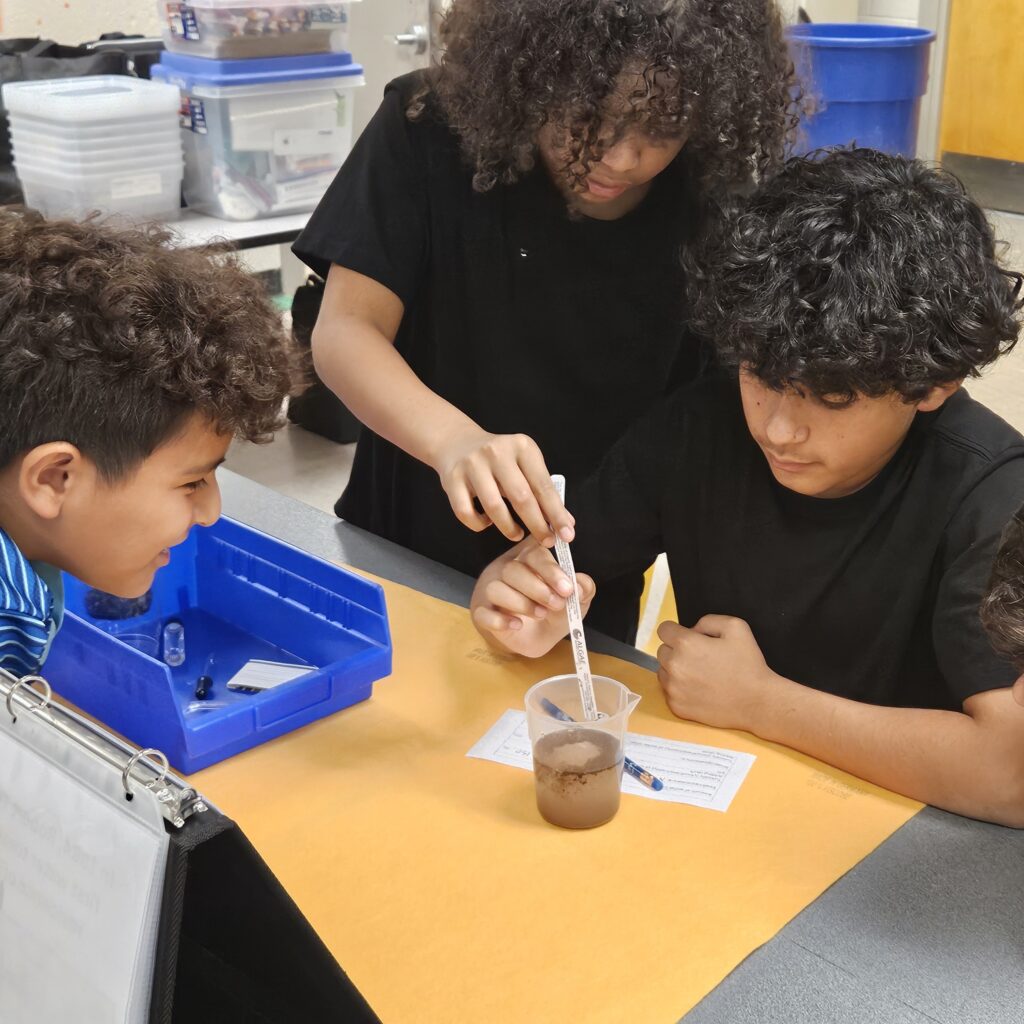
Murky to Marvelous: A Clean Water Challenge
When we turn on our faucets, clean water seems to magically appear. But what goes on behind the scenes to bring this drinking water to our homes and schools? Discover how people have cleaned water throughout history, conduct your own filtration experiment with modern-day treatment materials, and learn how much water you can conserve with simple changes.
Key Concepts
- Water is a valuable natural resource that we must manage responsibly and conserve. (S.5.11)
- Throughout history, water engineers and scientists have discovered and developed innovative solutions to clean water, providing immense benefits to society. (S.5.4.A, SS.5.22)
- Water is the universal solvent and can be used to demonstrate the concept of solutions and mixtures. (S.5.6.A, S.5.6.B, S.5.6.C)
Key Skills and Activities
- Collect and record data before and after adding a chemical coagulant to determine changes in water quality. (S.5.1.D, S.5.1.E)
- Test and compare water filtration materials and assess their impact on water clarity and odor. (S.5.6.A)
- Demonstrate steps in the water filtration process and show how they are combined to effectively clean our drinking water. (S.5.5.C, S.5.5.D)
- Calculate gallons of water conserved by changing household water use. (M.5.1.B)
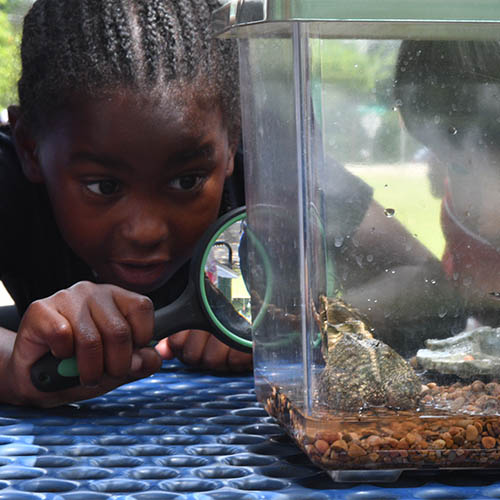
Aquatic Friends
Get up close with local, water-loving animals! Discover the unique features and life cycles that help them survive, try to match these animals’ athletic skills, and learn how to help these important wild neighbors and the waterways we depend on. (Indoors – Gym)
Key Concepts
- All people, plants, and animals need water to live.
- Frogs have body structures that help them survive.
- Frogs have a unique life cycle that depends on water.
- We can protect frogs and their habitats by conserving water and properly disposing of materials.
Key Skills and Activities:
- Observe and ask questions about live frogs.
- Identify how frogs’ body structures help them find food and stay safe from predators.
- Draw a frog habitat with frogs in all life stages.
NOTE: This lesson is not available Dec. – Feb. while the frogs are taking a winter nap.
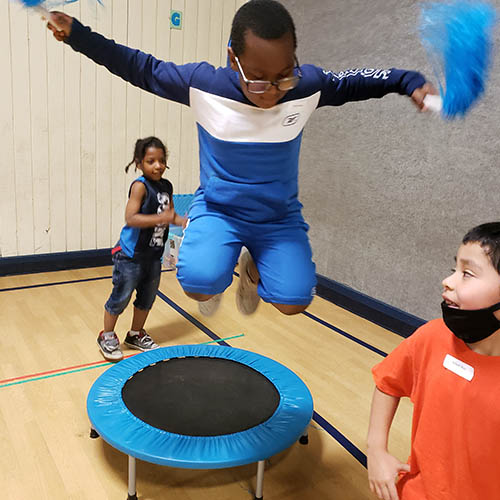
Water Ninjas
Take an imaginary journey as a water droplet traveling from a cloud all the way to your faucet at home. Use your new knowledge to design and test a high-energy obstacle course for water drops that mirrors part of the urban water cycle! (Indoors – Gym)
Key Concepts
- Water is valuable because we need it to survive and use it in many ways.
- In North Texas, we build lakes to supply drinking water, water treatment plants to clean the water, and pipes to move it to places we need it.
- Conserving water makes our water supplies last longer and helps ensure we have enough water for all our needs.
Key Skills and Activities
- Design and complete creative movements for an obstacle course that models the urban water cycle.
- Identify ways to conserve water at home and school.

